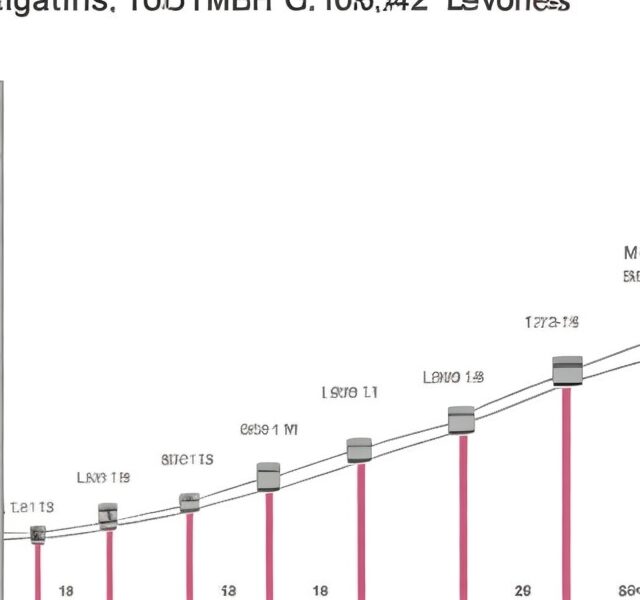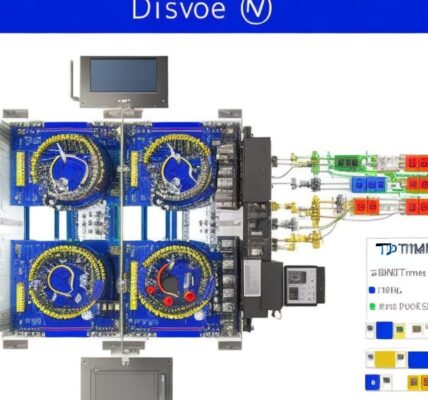- Introduction to LTE: Long-Term Evolution (LTE) is a standard for wireless broadband communication, designed to provide high-speed data transmission and support various multimedia services. LTE is a part of the 4G (Fourth Generation) mobile communication technology family and represents a significant advancement over previous cellular technologies.
- Data-Centric Approach: LTE is primarily designed to meet the increasing demand for high-speed data services. Unlike previous cellular technologies that primarily focused on voice services, LTE adopts a data-centric approach, prioritizing high data rates, low latency, and efficient spectrum utilization for data-intensive applications.
- All-IP Network: LTE is built upon an all-IP (Internet Protocol) network architecture, enabling seamless integration with the existing internet infrastructure. The use of IP-based protocols allows for simplified network management, enhanced scalability, and efficient handling of data traffic.
- Orthogonal Frequency Division Multiple Access (OFDMA): LTE utilizes Orthogonal Frequency Division Multiple Access (OFDMA) as the access scheme for the downlink (base station to user) communication. OFDMA divides the available spectrum into multiple orthogonal subcarriers, allowing multiple users to transmit data simultaneously on different subcarriers. This enables efficient spectrum utilization and enhances the system’s capacity.
- Single Carrier Frequency Division Multiple Access (SC-FDMA): For the uplink (user to base station) communication, LTE employs Single Carrier Frequency Division Multiple Access (SC-FDMA). SC-FDMA reduces the peak-to-average power ratio (PAPR) compared to traditional OFDMA, resulting in more power-efficient transmissions from user devices.
- Multiple Input Multiple Output (MIMO): LTE incorporates Multiple Input Multiple Output (MIMO) technology, which utilizes multiple antennas at both the base station and user devices. MIMO enables spatial multiplexing, diversity, and beamforming techniques, improving spectrum efficiency, link reliability, and overall system performance.
- Enhanced Radio Resource Management: LTE employs advanced radio resource management techniques to optimize the utilization of available spectrum resources. These techniques include dynamic spectrum allocation, adaptive modulation and coding, and fast scheduling algorithms, ensuring efficient utilization of resources and maximizing user throughput.
- Evolved Packet Core (EPC): The Evolved Packet Core (EPC) is a key component of the LTE network architecture. It provides the core network infrastructure, including functions such as mobility management, session management, and IP connectivity. The EPC is designed to handle the increased data traffic and supports seamless mobility between LTE and other network technologies.
- Backward Compatibility: LTE is designed to be backward compatible with existing 2G and 3G networks. This allows for a smooth migration path for operators and ensures that LTE-capable devices can still connect to legacy networks when LTE coverage is not available.
- LTE Advanced: LTE Advanced is an enhanced version of LTE that offers higher data rates, improved coverage, and increased system capacity. It incorporates additional features such as carrier aggregation, enhanced MIMO, and improved interference management techniques to deliver higher performance and meet the growing demands of users.
- Voice over LTE (VoLTE): While LTE is primarily focused on data services, Voice over LTE (VoLTE) enables high-quality voice calls over the LTE network. VoLTE utilizes IP-based voice calls, offering better voice clarity, faster call setup times, and simultaneous voice and data services.
- Applications of LTE:
- Mobile Broadband: LTE provides high-speed mobile broadband services, allowing users to stream multimedia content, download large files, and engage in real-time communication applications.
- Internet of Things (IoT): LTE supports IoT applications, connecting various devices and enabling machine-to-machine communication. LTE’s low latency, wide coverage, and efficient power usage make it suitable for IoT deployments.
- Public Safety Communications: LTE is being adopted for public safety communications, providing robust and secure communication networks for emergency services, disaster response, and public safety agencies.
- Video Streaming and Online Gaming: LTE’s high data rates and low latency make it ideal for video streaming and online gaming applications, delivering smooth and immersive user experiences.
In summary, Long-Term Evolution (LTE) is a 4G wireless communication technology that offers high-speed data transmission, low latency, and efficient spectrum utilization. It utilizes OFDMA and MIMO technologies, operates on an all-IP network, and supports backward compatibility and seamless migration. LTE finds applications in mobile broadband, IoT, public safety communications, and multimedia services. With the continuous evolution of LTE Advanced and the emergence of 5G, LTE remains a prominent technology, providing reliable and high-performance connectivity for a wide range of applications.

The diagram shows the different components of an LTE system, including the mobile station, base station, and evolved packet core (EPC).
- Mobile Station: The mobile station is the user’s device, such as a cell phone. It contains a radio transmitter and receiver, as well as a control unit.
- Base Station: The base station is a fixed station that receives and transmits radio signals to and from mobile stations. It is connected to the EPC via a wired or wireless network.
- Evolved Packet Core (EPC): The EPC is the core network for the LTE system. It routes data between mobile stations and the internet, and it also handles billing and other administrative tasks.
LTE is a fourth-generation (4G) cellular network technology. It uses orthogonal frequency-division multiplexing (OFDM) to transmit data over the radio channel. OFDM is a very efficient way to transmit data over a wireless channel because it allows multiple users to share the same frequency band without interfering with each other.
LTE also uses multiple-input multiple-output (MIMO) antennas to improve the performance of the system. MIMO antennas allow the base station and mobile station to transmit and receive data over multiple antennas, which increases the data rate and range of the system.
LTE is a very high-speed cellular network technology. It can support data rates of up to 100 Mbps in downlink (from the base station to the mobile station) and 50 Mbps in uplink (from the mobile station to the base station). This makes it ideal for applications such as streaming video, online gaming, and file sharing.
LTE is the most widely deployed 4G cellular network technology in the world. It is used by major mobile operators in over 190 countries.

